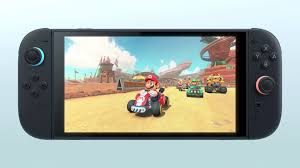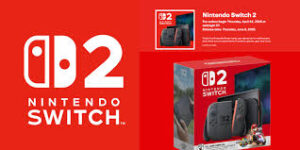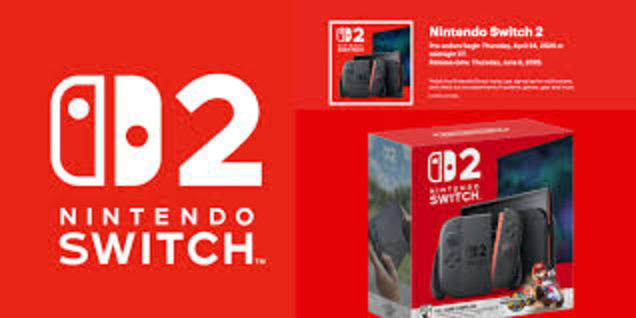Best Buy’s “Two Per Order” Rule for Nintendo Switch 2: What It Means for Gamers and the Gaming Market

The much-anticipated Nintendo Switch 2 is finally making waves in the gaming world. As pre-orders begin and hype builds, retailers are taking steps to manage demand and combat scalping—a notorious problem that has plagued major tech releases in recent years. One such move has come from Best Buy, a leading electronics retailer in North America, which has implemented a “two per order” limit for the Nintendo Switch 2.
On the surface, it seems like a straightforward rule. But this policy reveals much more about the evolving landscape of retail, consumer behavior, and how companies are navigating supply constraints in an age of high demand and even higher expectations. In this blog post, we’ll explore the rationale behind Best Buy’s decision, its implications for consumers and scalpers, and how it fits into the larger picture of gaming hardware launches.
A New Era of Gaming: The Nintendo Switch 2
Before diving into Best Buy’s purchasing policy, let’s talk about what makes the Nintendo Switch 2 such a big deal.
Nintendo’s original Switch console, released in 2017, was a game-changer—literally. Its hybrid nature allowed players to seamlessly transition between handheld and docked play, giving gamers flexibility and freedom. Coupled with a strong library of exclusive titles like The Legend of Zelda: Breath of the Wild, Animal Crossing: New Horizons, and Super Mario Odyssey, the Switch became one of Nintendo’s most successful consoles ever.
Now, with the Switch 2, Nintendo is aiming to build on that success. While official details are still being confirmed, industry insiders suggest the new model boasts a more powerful processor, enhanced graphics, a higher-resolution display, and backward compatibility with Switch games. Add in rumored support for DLSS (Deep Learning Super Sampling) and a larger screen, and it’s easy to see why anticipation is sky-high.
But high demand always brings a familiar problem: scarcity.
Best Buy’s “Two Per Order” Limit: Why It Matters

When Best Buy announced that it would be limiting customers to two Nintendo Switch 2 consoles per order, it sparked a mix of reactions. Some applauded the decision, while others questioned its effectiveness.
Let’s break down the core reasons behind the policy:
1. Combatting Scalping
One of the most frustrating issues gamers face during console launches is scalping. Automated bots snatch up inventory seconds after it goes live, only for the products to appear moments later on resale sites at double or triple the price. By limiting purchases to two units per customer, Best Buy is attempting to disrupt this cycle and create a more fair opportunity for genuine consumers.
2. Creating a More Even Playing Field
Limiting per-order quantities also means more customers can get access to the console. Instead of one person buying up 10 units, potentially leaving others empty-handed, the two-per-order rule helps spread out the initial inventory. While it doesn’t guarantee universal access, it does help level the playing field.
3. Managing Inventory and Logistics
From a logistical standpoint, large pre-orders can complicate inventory forecasting, warehousing, and delivery. Capping orders helps Best Buy better manage its stock and reduce the likelihood of overselling or delays.
How Scalping Has Shaped Retail Policies
The rise of scalping in the digital age has significantly influenced how retailers handle high-demand product launches. From PS5s to GPUs to sneakers, limited-edition and high-tech products are prime targets.
Retailers like Best Buy, Walmart, and Target have adapted by:
-
Implementing purchase limits
-
Requiring verified accounts for checkout
-
Using queue systems to control website traffic
-
Launching membership-only access, like Best Buy’s TotalTech program, which occasionally offers early access to products
These measures are not foolproof, but they represent an evolving strategy to protect consumers and maintain trust.
The Consumer Perspective: Frustration or Fairness?
For everyday gamers, the two-unit limit might feel like a double-edged sword. On one hand, it gives more people a chance to buy a console at launch. On the other, families with multiple children or collectors who genuinely want more than two units might feel constrained.
Still, for most consumers, the rule is a welcome change. It signals that Best Buy is at least trying to address the chaos that so often surrounds major hardware launches. And while no policy can fully prevent scalping, any deterrent is better than none.
Moreover, the limit doesn’t stop a person from placing multiple orders from different accounts or using different addresses—but it does raise the effort threshold for scalpers. That slight friction might be enough to dissuade all but the most determined.
Implications for Nintendo and the Gaming Industry
Nintendo has long prided itself on creating accessible, family-friendly entertainment. But the company has also been criticized for failing to meet demand during key product launches, including the original Switch and the NES/SNES Classic Editions.
Best Buy’s purchasing limit, while independently enforced, aligns with a broader industry push for equitable distribution. For Nintendo, it’s a double win: the perception of scarcity increases demand, while retailers appear responsible and consumer-friendly.
If Switch 2 follows the path of its predecessor, it will be sold out for months after launch. With Best Buy and other retailers proactively setting limits, the chaos might be a bit more controlled this time around.
Retail Strategy: More Than Just Limits
Beyond per-order caps, retailers like Best Buy are likely to roll out additional tactics to manage the launch. These may include:
-
Staggered restocks: Dropping small batches of stock over time to maintain steady traffic and keep interest high
-
Exclusive bundles: Packaging the console with accessories or games to discourage resellers and appeal to genuine buyers
-
In-store only offers: Encouraging foot traffic and reducing bot purchases
These strategies create a dynamic and somewhat unpredictable launch environment, but they also increase the chances of regular consumers walking away with a console in their cart.
The Bigger Picture: What This Means for Future Tech Drops
The Switch 2 isn’t the first—and won’t be the last—hot item to hit the market. But the approach retailers take with this launch could set the tone for future tech rollouts.
As consumers become more savvy and vocal, retailers will continue refining their tactics. Expect more emphasis on:
-
Verified access models: Like Best Buy’s TotalTech, Amazon’s Prime-exclusive sales, or Sony’s invitation-based PS5 drops
-
AI-powered fraud detection: To identify suspicious buying patterns in real time
-
Community-focused releases: Localized or event-based product launches that reward real fans
For the gaming community, these changes can’t come soon enough. Fans have grown tired of refreshing web pages, battling bots, and watching eBay prices soar. Fairness and access are no longer nice-to-haves—they’re expectations.
Conclusion: A Small Rule with Big Impacts
Best Buy’s “two per order” rule for the Nintendo Switch 2 may seem like a small tweak, but its significance goes far beyond limiting quantity. It represents a shift in how retailers are approaching fairness, consumer trust, and product availability in a high-demand, high-stakes environment.
As the gaming world braces for another major console launch, this move might help ensure that more people—real fans, families, and gamers—get to experience the next chapter of Nintendo magic firsthand.
The road ahead will still be bumpy. Bots will adapt. Scalpers will scheme. But with retailers and consumers more aware and prepared than ever, there’s reason to hope for a smoother, more equitable rollout.
Whether you’re a die-hard Nintendo fan or a casual gamer, one thing’s clear: the Switch 2 is going to be big. And thanks to small policies like Best Buy’s, it might just be a little easier to actually get one in your hands.

